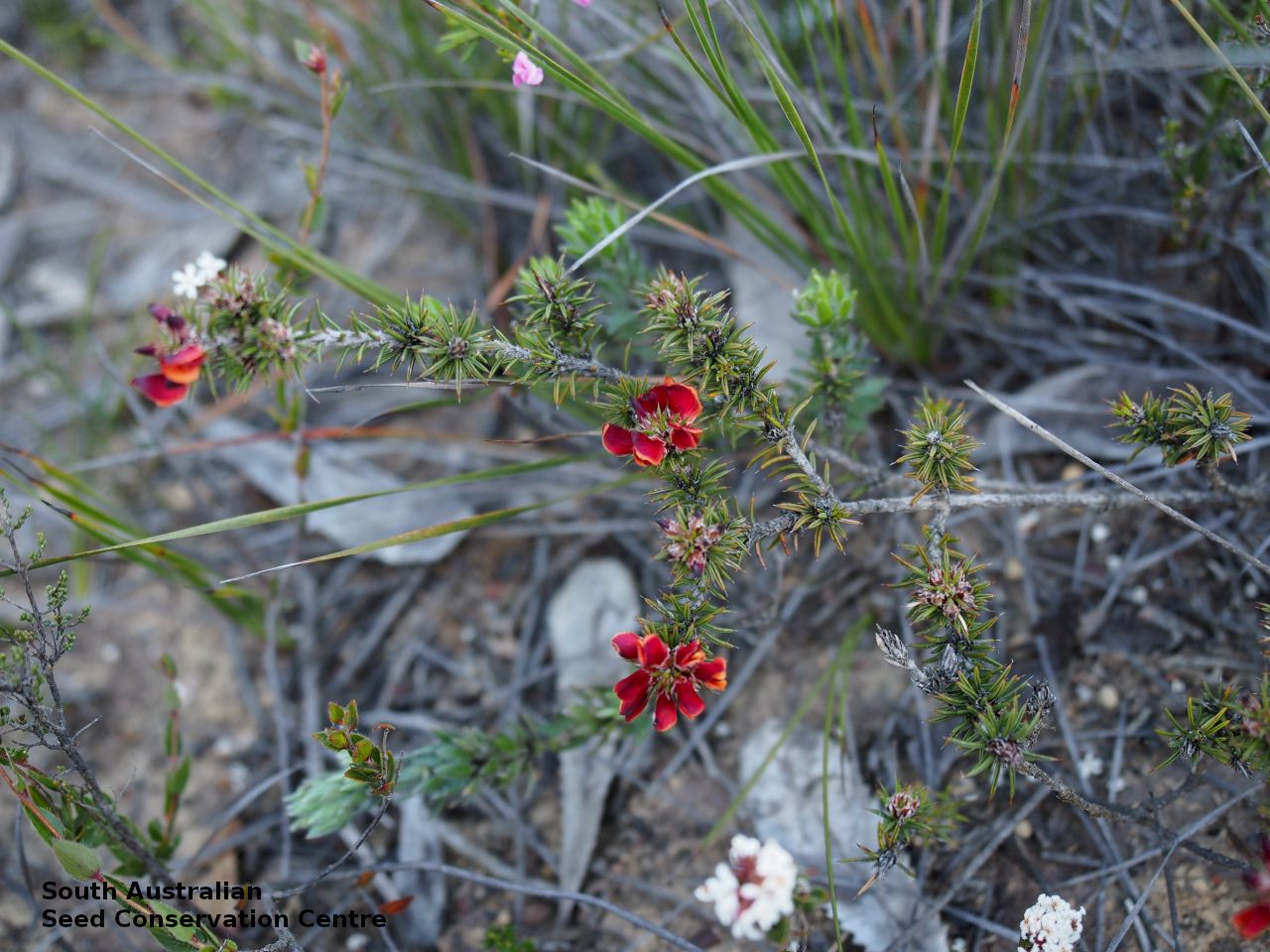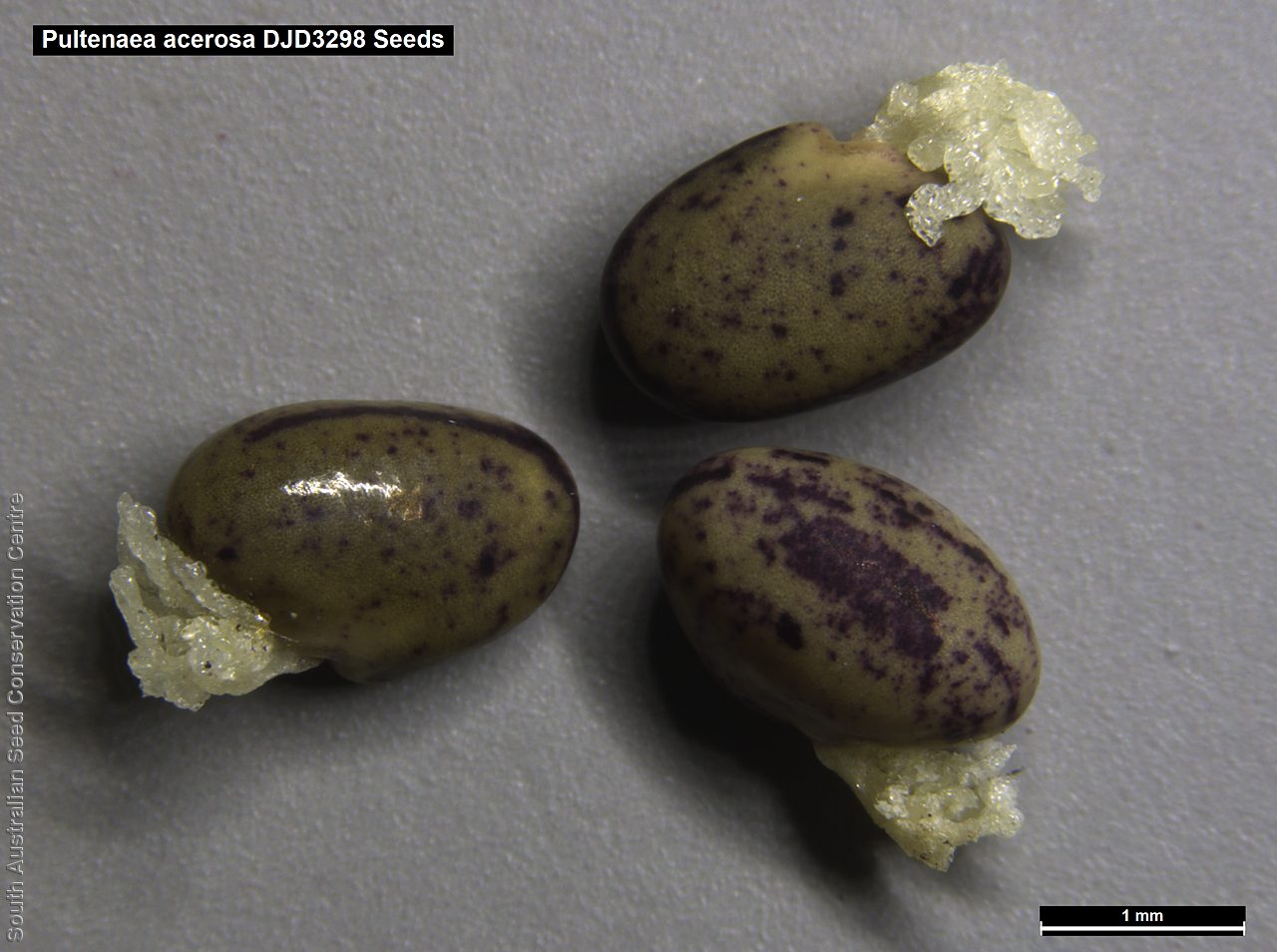























Botanical art
Prior names
Pultenaea acerosa var. acerosa
Pultenaea acerosa var. acicularis
Etymology
Pultenaea named after Richard Pulteney (1730 – 1801), an English physician, botanist and biographer of Carl Linnaeus. Acerosa from the Latin 'acer' meaning sharp; referring to the needle-like leaves.
Distribution and status
Found in the southern part of South Australia, from the Eyre Peninsula to the South-east, growing in dry sclerophyll woodland and mallee. Also found in Victoria. Native. Common in South Australia. Rare in Victoria.
Herbarium regions: Eyre Peninsula, Yorke Peninsula, Southern Lofty, Kangaroo Island, South Eastern, Green Adelaide
NRM regions: Adelaide and Mount Lofty Ranges, Eyre Peninsula, Kangaroo Island, South Australian Murray-Darling Basin, South East
AVH map: SA distribution map (external link)
Plant description
Small rigid, much-branched shrub to 60 cm high with terete stems covered in white woolly hairs. Leaves alternate, linear-terete, to 10 mm long, tapering into a strong pungent point, grooved on upper surface, sometimes pubescent at first, later glabrous. Inflorescence clusters of 5–10 yellow, orange or red pea-flowers at the tips of branches. Flowering between August and December. Fruits are hairy brown ovoid pod to 4 mm long. Seeds are yellowish-brown with black mottled reniform seed to 2 mm long and 1.3 mm wide, with a cream aril. Seed embryo type is bent.
Seed collection and propagation
Collect seeds between October and January. Collect maturing pods, those that are brown or turning brown and contain hard black seeds inside. Plant is prickly so it is advisable to wear gloves. Place the pods in a paper bag and leave to dry for one to two weeks. Then rub the pods with a rubber bung to dislodge the seeds. Use a sieve to separate the unwanted material. Store the seeds with a desiccant such as dried silica beads or dry rice, in an air tight container in a cool and dry place. This species has physical dormancy that needs to be overcome for the seed to germinate. The seed coat needs to be ruptured so that water can enter the seed before germination can occur. Methods to rupture the seed coat include scarification with sand paper or nicking the seed coat with a sharp blade or hot water treatment by immersion in boiling water.